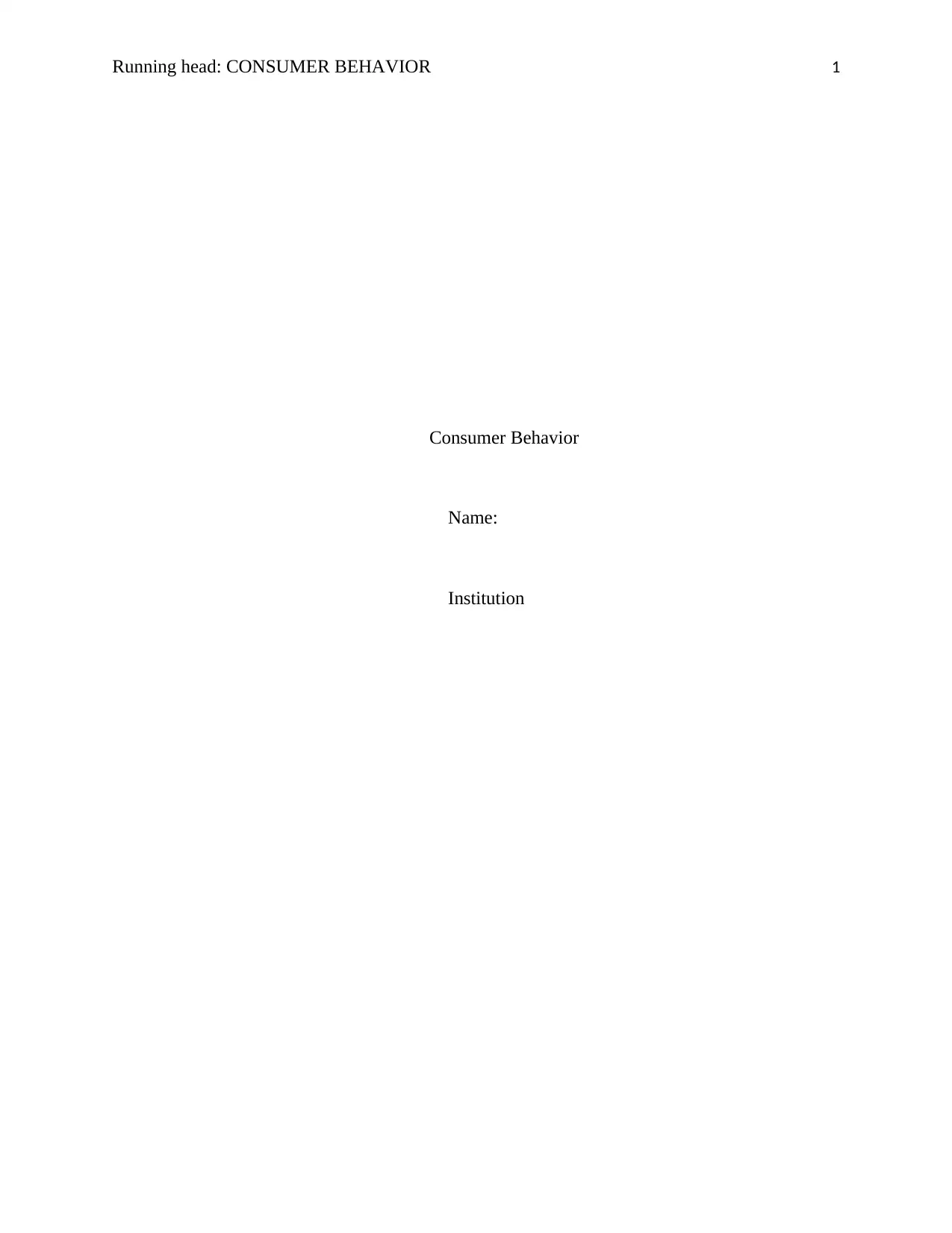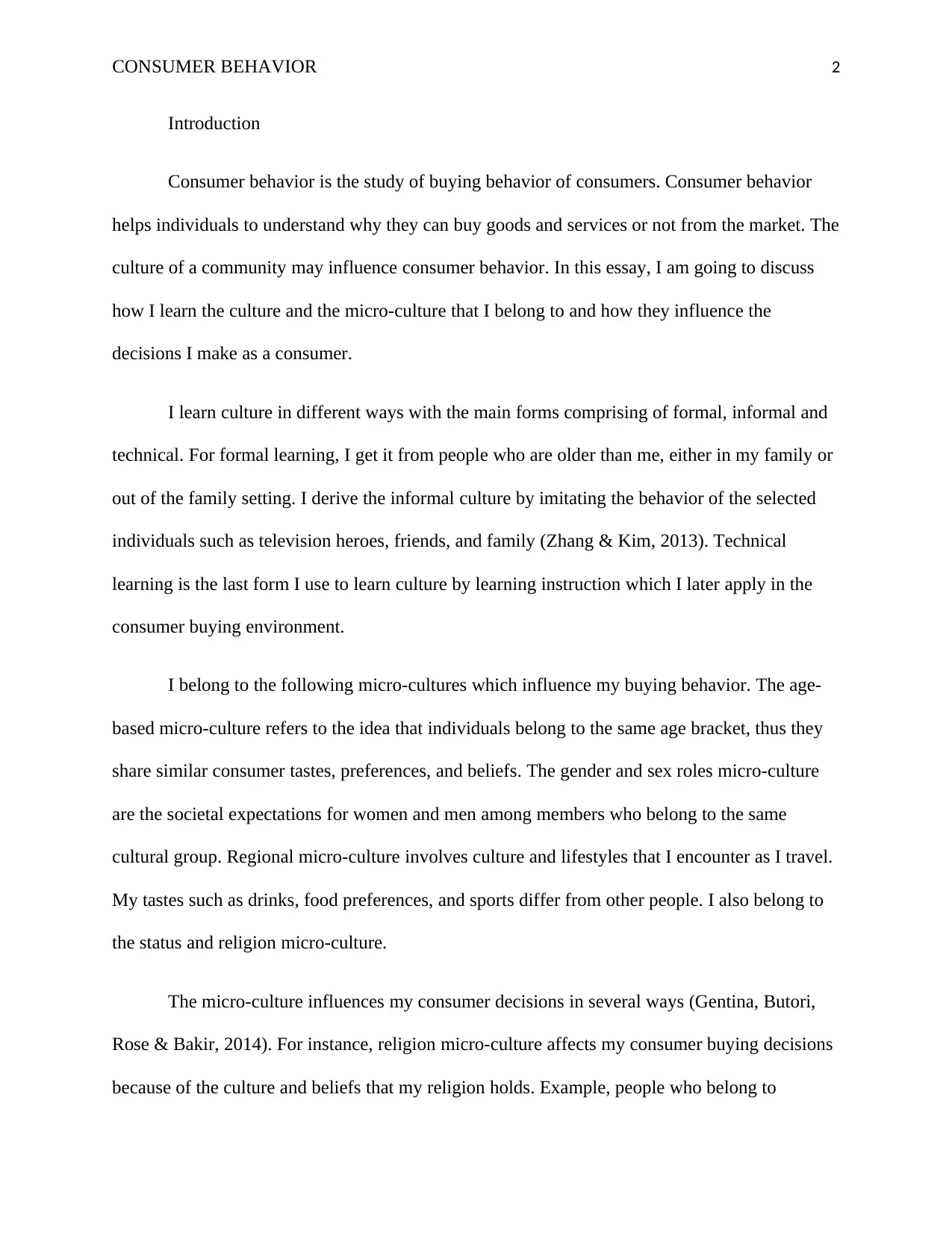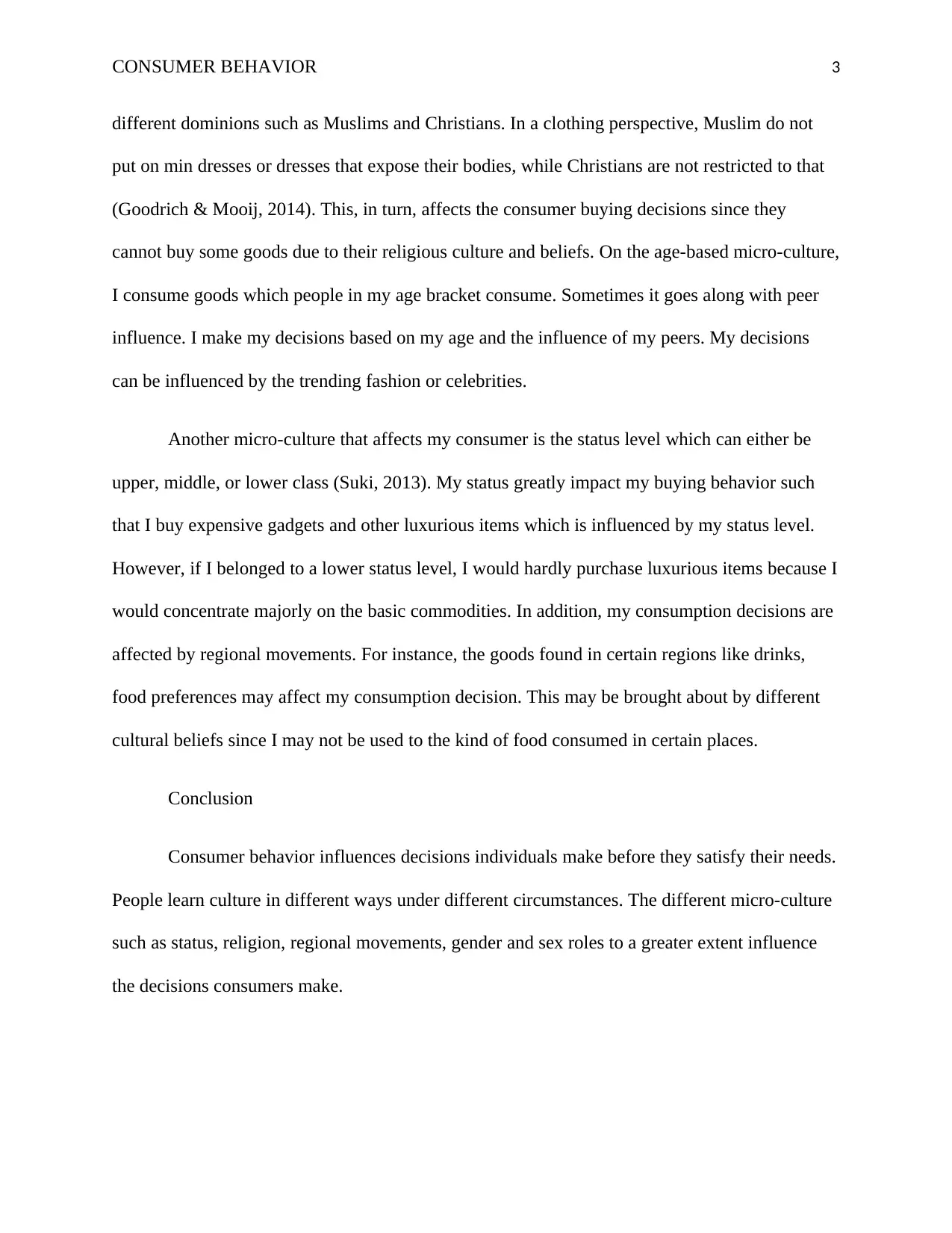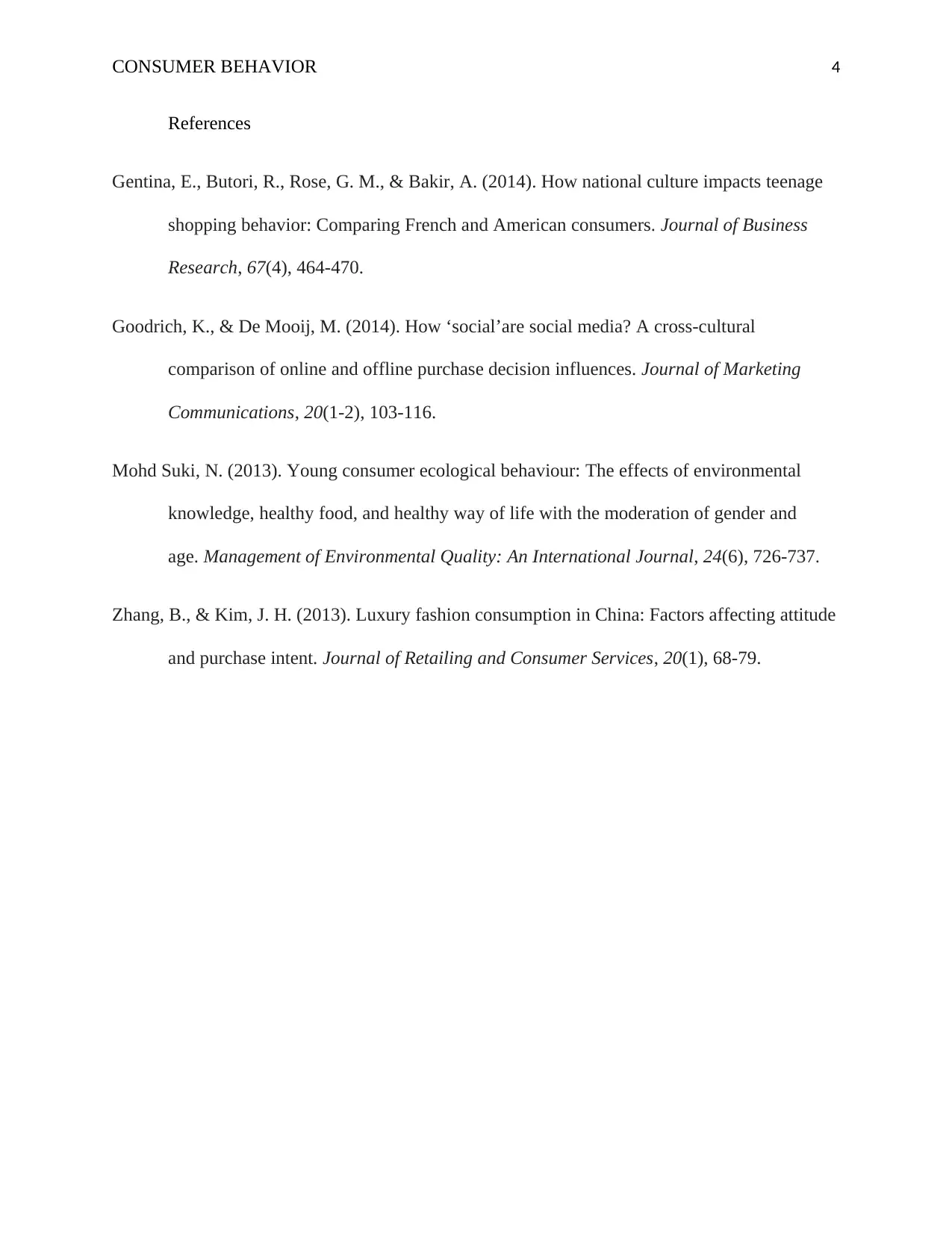Consumer Behavior Assignment: Culture and Consumption
VerifiedAdded on 2023/06/03
|4
|830
|441
Journal and Reflective Writing
AI Summary
This reflective journal entry explores the multifaceted influence of culture and micro-cultures on consumer behavior. The author delves into how culture is learned through formal, informal, and technical methods, drawing upon personal experiences and observations. The essay identifies various micro-cultures, including age-based, gender, status, and religion, and examines their impact on consumer decisions. The author provides specific examples of how these micro-cultures influence purchasing choices, such as the impact of religious beliefs on clothing preferences or the effect of status on luxury item purchases. The essay highlights how regional movements and peer influence also contribute to shaping consumer behavior. The analysis demonstrates a clear understanding of how cultural factors shape individual preferences and buying habits.
1 out of 4










![[object Object]](/_next/static/media/star-bottom.7253800d.svg)